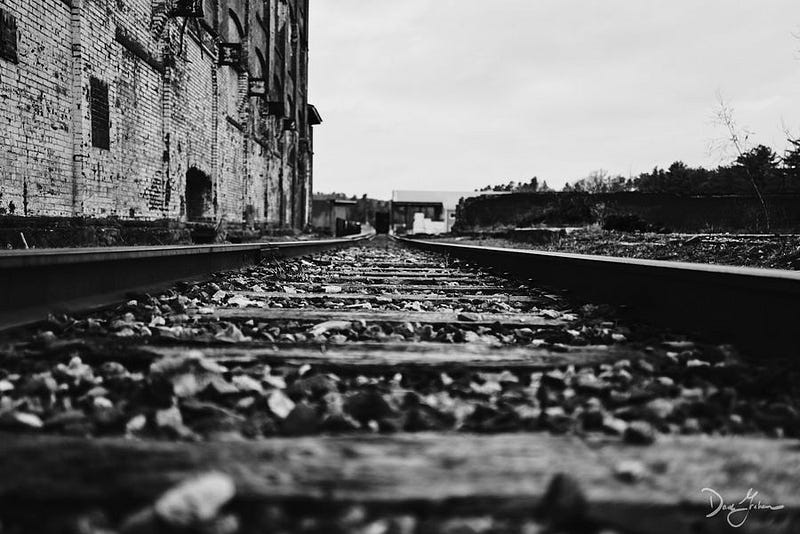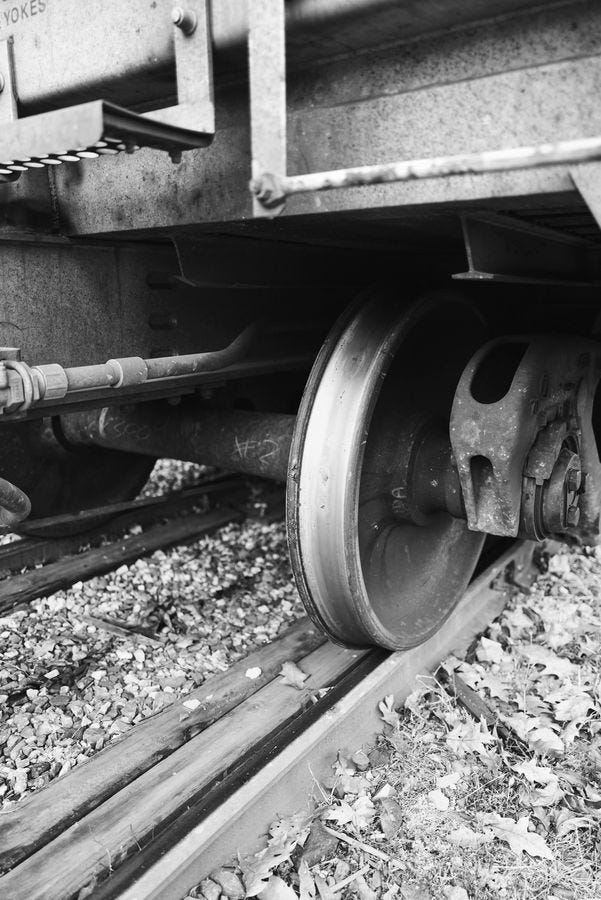Rail Cars and Social Foundations

We’ve spent the week running about my Sunday, looking into the nooks and crevices of a central Massachusetts with an eye towards our pasts, to the foundations that have made us who we are today. I’d argue that we’re never quite done building and repairing since we weather so many storms and challenges in life. Our buildings may be different, more architecturally challenging than your typical saltbox or ranch-style estate, but all together, we’ve built quite a diverse community and presence.

I noticed, upon closer inspection of the warehouse from yesterday, that I could walk a bit closer to its towering presence, across the steel barriers of rail lines strung off to the far banks of the river and the weed-strewn concrete that used to be the factory floor. That there were still rail cars present is always exciting. There’s something about our history with railroads and commerce that I find fascinating, especially as we’ve foregone this centuries-old means of transportation for more individualized means.
These weren’t old, rusted out hulks of a bygone era. They were tattooed shells of current vintage, sidled up to the sliding doors of the warehouse like vultures, waiting for their cargo to be placed or removed. This was, perhaps, a sign of life to the building itself: the presence of “new” under the aegis of “old.” You could see from the well worn sheen of the rails that their use continued, in addition to the darkened carriage off to the far horizon.

In an era of disposability, rail cars provide a nice counterbalance. They’re not so readily used and tossed away. Their convenience for moving large amounts of dry/wet goods across geographic boundaries are, compared to most, only limited by our gross fascination with semitrucks and trailers. On a fuel efficiency basis, trains average 2 to 5 times more ton-miles than a semi does and, while our roads have far eclipsed our rail coverage, there’s something to be said for their continued usage.
This isn’t a story to wax poetic about trains but rather to gain perspective, again, on the “once was” part of our histories. You see, the fascination I have with rail cars, trains, and old warehouses is based around a connection, an undercurrent of understanding.
As I get older, I find this synnergistic connection to the things that used to form the core of our society: the Beta Maxes, the laser discs, the VHS tapes, the typewriters, the pens, the…the list goes on. They’re a symbol of a bygone era, in many cases, and while current and future generations will marvel at their analogue simplicity (and perhaps fetishise it as so many seem to be doing these days), these tools, these implements are critical to our social foundation.
You and I, despite our disparate circumstances, are critical to the social foundation of our communities. We may be older, wiser, and have suffered a few hard knocks, but we’re seminal to our communities. We’re tattooed with experiences that act as colourful displays of humanity, we’re wrapped in the trappings of a rich history, rife with conflict and connection, hope and despair. All of these things, just like the juxtaposition of a “new” rail car and an “old” warehouse, complete our composition.
As always, I’m grateful for your existence in this social fabric, this housing estate of wonderous composition. I’m looking forward to the close of another chapter and the beginning of the next with you and, as these days grow ever shorter, I pray that you find the richness of your history and share it with others.
May it ever be so.





